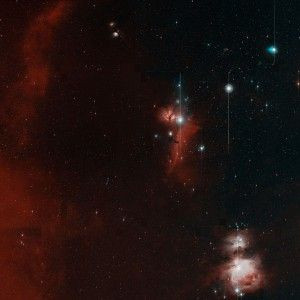Zwicky Transient Facility Telescope, With 576-Megapixel Camera, Sees 'First Light'

A group of scientists from California Institute of Technology (Caltech) and the University of Washington has modified an old telescope to create a powerful tool capable of capturing high-definition images of the Northern sky every night and discovering violent cosmic events as they happen.
The Zwicky Transient Facility (ZTF), a new robotic camera with the ability to capture hundreds of thousands of stars and galaxies in a single shot, has taken its first image of the sky, an event astronomers referring to as “first light.”
The image taken by the camera — which has 24,000 pixels by 24,000 pixels resolution — was released on Nov. 14. The new survey project is based at Caltech's Palomar Observatory near San Diego, California.

According to a release on the University of Washington’s website, “The ZTF’s goal is to use these nightly images to identify 'transient' objects that vary between observations — identifying events ranging from supernovae millions of light years away to near-Earth asteroids.”
The aim of observatories like ZTF is to perform quick sky surveys. These rapid observations of space and celestial bodies help us study new objects or changes in existing ones.
Zwicky will be able to spot even temporary changes throughout the night sky, and any anomalies in space can be captured in high detail.
The ZTF could also help detect electromagnetic counterparts to gravitational wave sources discovered by Advanced LIGO and Virgo, as other observatories did in August when these detectors picked up gravitational waves emanating from the merger of two neutron stars.
Once the ZTF identifies these high-priority transient objects in space, they can be studied using larger telescopes, including the Apache Point Observatory 3.5-meter telescope.
“The ZTF survey will be transformative for the study of supermassive black holes feasting on stars in the centers of galaxies,” Suvi Gezari, an assistant professor of astronomy at the University of Maryland, said in a press release by University of Maryland website.
“The timing of these events, known as tidal disruption events, can be used to constrain the mass and spin of black holes. Data from ZTF may also offer a rare, real-time glimpse into the formation of an accretion disk—and possibly relativistic jets—around a supermassive black hole,” she added.
“What excites me most about ZTF is the huge field of view it will open up to connect optical transients with extreme events,” said Julie McEnery, Fermi project scientist at NASA’s Goddard Space Flight Center and an adjunct associate professor of physics at the University of Maryland, in the report.
“For future gravitational wave events from LIGO and Virgo, we’ll be given a very large region of the sky to search. Neutrino events and gamma-ray bursts are also not well localized. The ZTF survey will allow us to connect the optical universe to all three of these extreme phenomena,” she added.
The telescope is named after Fritz Zwicky, a pioneer of dark matter who discovered 120 supernovae during his lifetime. He was the first to suggest that galaxies were moving slower than they should be, as if some unseen clump of matter were slowing the movement, leading to the theory of dark matter. The team behind the ZTF hopes that it will help scientists get a better picture of celestial objects across the night sky and their movement.
© Copyright IBTimes 2024. All rights reserved.





















